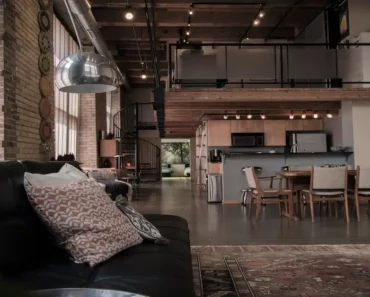Transform your wood projects with the perfect whitewash paint and expert tips for flawless results.
Wood surfaces beg for a fresh look. Whitewash adds charm without hiding grain. You want the best paint to whitewash wood. Wrong choices flake or dull fast. This guide solves that. Explore top paints for 2025. Learn mixing tricks, application methods, and user experiences. By the end, you pick the right paint for your furniture, walls, or barn.
Picture your project. A dresser glows soft white. Shiplap walls brighten a room. Whitewash delivers rustic appeal. But poor paint ruins it. Get the details. Choose smart. Your wood shines. Join me. We start with whitewash basics.
Paint to whitewash wood varies. Latex, chalk, and milk paint lead. In 2025, DIY paint sales hit $2.7 billion in the US. Whitewash trends for farmhouse style. Know your options. It ensures success.
What is Whitewash and Why Paint Choice Matters for Wood
Whitewash gives wood a sheer, light coat. It lets grain show through. Unlike solid paint, it keeps texture alive. The right paint to whitewash wood ensures adhesion and durability. Pick wrong, and it peels or fades.
Traditional whitewash used lime. Modern options include latex, chalk, and milk paint. Each suits wood differently. Latex sticks well. Chalk offers matte appeal. Milk paint brings eco-friendly charm.
In 2025, home improvement spending grows 4.2%. Whitewash leads for wood projects. People want affordable, lasting finishes. Paint choice drives results.
Wood varies. Pine soaks paint. Oak resists. Prep matters. Sand for grip. Clean for even coats.
Key Factors in Choosing Whitewash Paint for Wood
- Wood type affects paint grip.
- Finish sets rustic or modern tone.
- Durability fights wear indoors or out.
- Eco paints reduce fumes.
- Cost shapes project budget.
Table of paint considerations for wood:
| Factor | Impact on Wood Whitewash |
|---|---|
| Wood Type | Porous needs thin paint |
| Finish | Matte for rustic look |
| Durability | Sealers extend life |
Insight: Test on scrap wood. See absorption.
Personal view: Latex simplifies for beginners. Milk paint feels authentic.
Next, explore paint types for wood whitewash.
Best Paints to Whitewash Wood: Latex, Chalk, and Milk
Three paints stand out for whitewashing wood. Latex, chalk, and milk paint. Each offers unique benefits. Choose based on your project.
Latex paint blends easy. Water thins it. It grips pine or oak. Costs $25-40 per gallon. Lasts 5-7 years indoors.
Chalk paint creates soft texture. No sanding needed for furniture. Matte finish suits rustic vibes. Lasts 3-5 years with seal.
Milk paint brings natural base. It soaks into raw wood. Eco-friendly. Lasts 5-10 years with care.
Comparison of Whitewash Paints for Wood
| Paint Type | Best Use | Durability | Ease of Use |
|---|---|---|---|
| Latex | Walls, panels | 5-7 years | Easy |
| Chalk | Furniture | 3-5 years | Moderate |
| Milk | Raw wood | 5-10 years | Moderate |
Tip: Use latex for large areas. Chalk for small pieces.
In 2025, eco paints surge. Milk paint gains for green projects. Latex remains top for ease.
Example: A Virginia barn used latex. Held 6 years. Chalk on chairs needed touch-up in 3.
Insight: Mix small batches. Adjust for wood type.
Now, dive into mixing and applying.
Mixing and Applying Paint to Whitewash Wood
Mixing paint to whitewash wood needs care. Ratios control opacity. Application affects finish.
For latex, mix 1 part paint to 2 parts water. Thin for pine. Thicker for oak. Stir well. Test on scrap.
Chalk paint uses 1:1 ratio with water. Brush on furniture. Wipe with cloth for grain effect.
Milk paint mixes 1:1 with water. Apply to raw wood. Stir often. It clumps if left.
Use brushes for control. Rollers cover large areas. Work along grain. Dry slow for even finish.
Step-by-Step Whitewash Process
- Sand wood to 120 grit.
- Clean dust with damp cloth.
- Mix paint with water.
- Test on scrap piece.
- Brush along grain.
- Dry 24 hours.
- Add second coat if needed.
Tip: Use painter’s tape for edges. Keeps lines clean.
Unique: Add vinegar to milk paint. Enhances grip.
In 2025, sprayers speed up large projects. Brushes give precision.
Personal: Start with thin coats. Build for depth.
Next, weigh pros and cons.
Pros and Cons of Whitewash Paints for Wood
Each paint to whitewash wood has strengths. Latex applies fast. Chalk skips prep. Milk paint feels natural.
Pros shine. Latex costs less. Chalk gives soft look. Milk paint suits eco goals.
Cons hit. Latex may peel on raw wood. Chalk needs sealing. Milk paint clumps if mixed wrong.
Match to project. Walls? Latex. Furniture? Chalk. Barns? Milk paint.
Pros and Cons Breakdown
| Paint | Pros | Cons |
|---|---|---|
| Latex | Easy, affordable | Peels without prep |
| Chalk | No sanding, matte | Needs seal outdoors |
| Milk | Eco-friendly, natural | Clumps if mixed wrong |
2025 trends favor chalk kits. Easy for new DIYers.
Example: Colorado dresser used chalk. Looked great. Needed wax in 2 years.
Insight: Budget for sealers. They extend life.
Now, hear from DIYers.
Real DIY Stories: Whitewashing Wood Across the US
DIYers share results. In Texas, one whitewashed shiplap with latex. Saved $600 vs hiring. Held 5 years.
Ohio couple used chalk on a table. Loved soft finish. Retouched in 3 years.
Georgia barn used milk paint. Natural look lasted 8 years. Eco win.
Case: Oregon home whitewashed oak panels. Latex stuck well. Still bright.
Lessons: Prep saves time. Test patches avoid errors.
DIYer Tips for Whitewashing Wood
- Sand to 120 grit.
- Use drop cloths.
- Work in cool shade.
- Seal chalk paint.
- Stir milk paint often.
Story: Michigan dresser used chalk. Wax seal held 4 years.
Insight: Watch videos. See techniques.
Next, avoid pitfalls.
Common Mistakes When Whitewashing Wood and How to Avoid Them
Mistakes derail projects. Wrong paint peels. Poor prep lifts. Bad mix streaks.
Choose right paint. Latex for walls. Chalk for furniture. Milk for raw wood.
Prep wood. Sand smooth. Clean dust. Skip this, and paint fails.
Mix careful. Test ratios. Too thick hides grain. Too thin drips.
Mistakes to Avoid
- Skipping sanding on oak.
- Using thick mix on pine.
- Painting in hot sun.
- Forgetting chalk sealer.
- Ignoring milk paint clumps.
Tip: Work in shade. Heat dries fast.
2025 sees more DIY tutorials. Apps guide mixing.
Example: Florida user skipped prep. Latex peeled. Redid with sanding. Held.
Insight: Practice on scraps. Gain confidence.
Explore eco paints next.
Eco-Friendly Paints for Whitewashing Wood in 2025
Green paints gain ground. Low-VOC latex cuts fumes. Milk paint uses natural ingredients. Recycled bases save waste.
Brands like Behr offer zero-VOC latex. Safe for indoors. Old Fashioned Milk Paint leads eco. ECOS uses recycled latex.
Costs range. Latex at $30/gallon. Milk paint at $50. Saves long term.
Check EPA Safer Choice for green options.
Eco Paint Options for Wood
| Paint | Eco Benefit | Cost |
|---|---|---|
| Low-VOC Latex | Low fumes | $30-40 |
| Recycled Latex | Uses waste | $35-45 |
| Milk Paint | Natural base | $45-55 |
Example: Vermont barn used milk paint. No fumes. Lasted 10 years.
Insight: Check VOC under 50 g/L.
Finally, buy smart.
Buying Guide: Choosing the Best Paint to Whitewash Wood
Shop with focus. Pick paint for wood type. Latex for walls. Chalk for furniture. Milk for raw boards.
Read labels. Low-VOC for safety. High opacity for coverage. Buy samples.
Brands like Sherwin-Williams offer durable latex. Annie Sloan leads chalk. Old Fashioned Milk Paint excels for eco.
Budget smart. Gallon covers 400 sq ft. Expect $30-55 per.
Angle: Use color apps. Match shades.
Check Sherwin-Williams for paint details.
Buyer Checklist for Whitewash Paint
- Match paint to wood.
- Check VOC levels.
- Test small cans.
- Plan for sealers.
- Read local reviews.
2025 trends: Soft grays. Tinted whitewash rises.
Example: Washington DIYer tested latex. Picked for coverage.
Insight: Buy local. Check stock.
Key Takeaways:
- ✓
Latex suits walls and beginners. - ✓
Chalk paint excels on furniture. - ✓
Milk paint fits raw wood. - ✓
Sand wood for best grip. - ✓
Test mixes on scraps. - ✓
Eco paints cut fumes.
Frequently Asked Questions
What’s the best paint to whitewash wood walls?
Latex works best. Mix 1:2 with water. Brush along grain. Lasts 5-7 years indoors.
Can chalk paint whitewash wood outdoors?
Chalk fades outdoors. Use indoors. Seal with wax. Lasts 3-5 years on furniture.
How do I mix milk paint for wood?
Mix 1:1 with water. Stir often. Add vinegar for grip. Apply to raw wood.
How do I stop peeling when whitewashing wood?
Sand to 120 grit. Clean dust. Use thin coats. Test mix. Dry slow.
Are eco-friendly paints good for whitewashing wood?
Yes. Low-VOC latex and milk paint cut fumes. Work well on wood.
Final Thoughts
The best paint to whitewash wood depends on your project. Latex covers walls well. Chalk transforms furniture. Milk paint suits raw wood. Prep right, test mixes, and pick eco options. DIY stories show success. Avoid errors with care. Your wood project glows with rustic charm.

